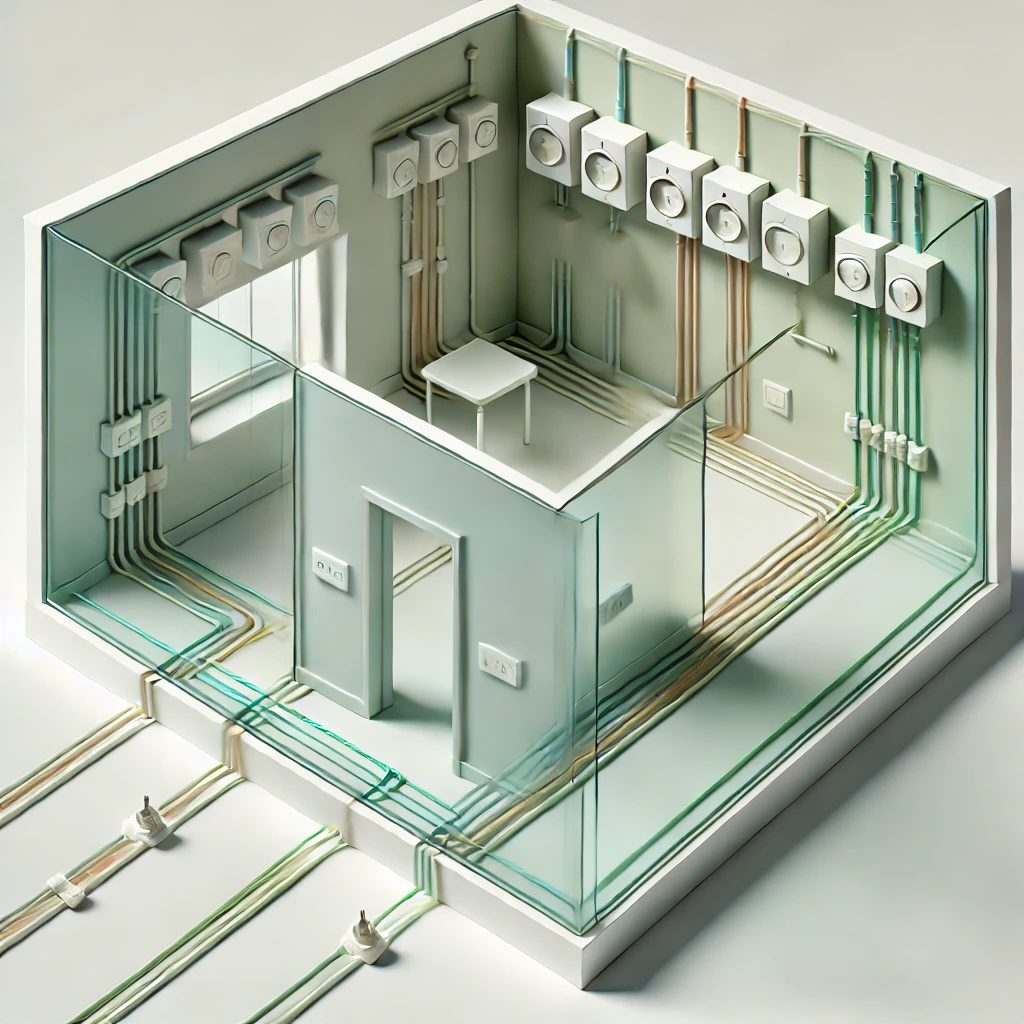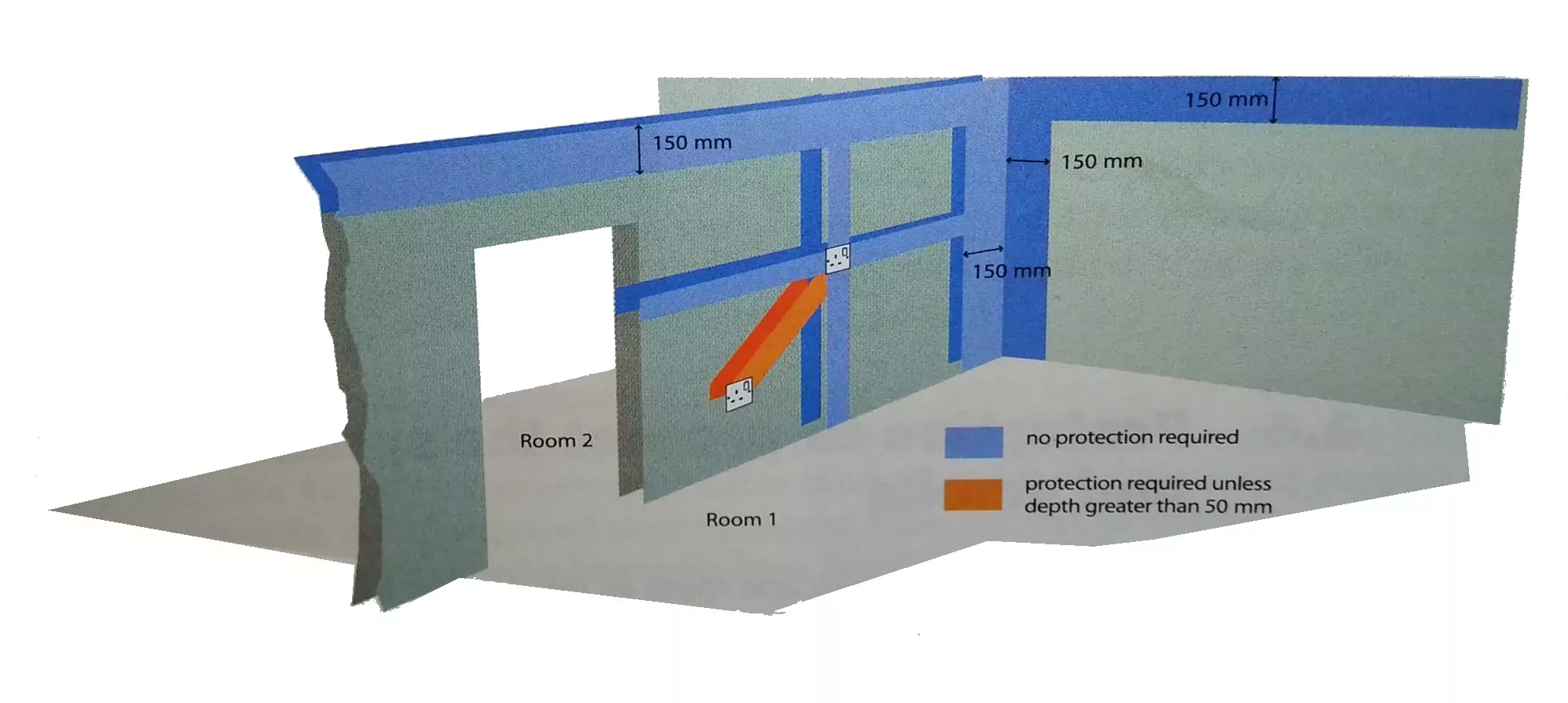What are the requirements for installing cables in walls and partitions according to BS 7671?
BS 7671 outlines specific regulations for the installation of cables in walls and partitions to ensure safety and compliance. These regulations cover minimum depths, RCD protection, and the use of mechanical protection or earthing for cables.

OW London Electrician and Home Automation Engineers Team
What are the requirements for installing cables in walls and partitions according to BS 7671?
The requirements for installing cables in walls and partitions are critical to ensuring safety and compliance with the electrical regulations outlined in BS 7671. According to the On-Site Guide, specific regulations must be followed when installing cables to protect them from potential damage and ensure they do not pose a hazard.
Source: On-Site Guide, The Institution of Engineering and Technology, page 92
Regulation 522.6.202 states:
7.3.2 Walls and partitions
A cable installed in a wall or partition must:
From 522.6.202
(a) be buried at least 50 mm from the surface; or
(b) be protected by a 30 mA RCD and installed in a zone either horizontally within 150 mm of the top of the wall or partition or vertically within 150 mm of the angle formed by two walls, or run horizontally or vertically to an accessory or consumer unit (see Figure 7.3.2). Where the wall is 100 mm thick or less and the location of the accessory or consumer unit can be determined from the reverse side, the zoning arrangement is projected through the wall.
From 522.6.204(i)
(c) have earthed armoring or an earthed metal sheath; or
From 522.6.204(iv)
(d) be enclosed in earthed steel conduit or trunking; or
From 522.6.204(ii) or (iii)
(e) be provided with mechanical protection sufficient to prevent penetration of the cable by nails, screws and the like (note that the requirement to prevent penetration is difficult to meet); or
(f) form part of a SELV or PELV circuit.Cables installed in walls or partitions with a metal or part metal construction must:
From 522.6.203
(i) be protected by a 30 mA RCD and, if they are at a buried depth of less than 50 mm, be installed as (b); or
From 522.6.203
(ii) be installed as (c), (d), (e) or (f).
Frequently Asked Questions
Q: What is the minimum depth for burying a cable in a wall according to BS 7671?
A: Regulation 522.6.202 states that a cable must be buried at least 50 mm from the surface of a wall or partition, or it must be protected by a 30 mA RCD and installed within specified safe zones.
Q: Are there any additional requirements for cables installed in walls with metal construction?
A: Regulation 522.6.203 requires that cables in walls with metal construction must be protected by a 30 mA RCD if buried at a depth of less than 50 mm, or they must be installed with earthing or mechanical protection.
Q: Can a cable be installed without RCD protection if it is not buried deep enough?
A: Regulation 522.6.204(ii) or (iii) mentions that cables can be installed without RCD protection if they have earthed armoring, are enclosed in earthed steel conduit, or have mechanical protection sufficient to prevent penetration.
Q: What are the safe zones for cable installation in walls and partitions?
A: According to Regulation 522.6.202(b), cables must be installed in a zone either horizontally within 150 mm of the top of the wall or partition or vertically within 150 mm of the angle formed by two walls, or they can run horizontally or vertically to an accessory or consumer unit.
Q: What should be done if the wall thickness is 100 mm or less regarding cable installation?
A: Regulation 522.6.202(b) also notes that if the wall is 100 mm thick or less, the zoning arrangement should be projected through the wall, especially if the location of the accessory or consumer unit can be determined from the reverse side.
What users Saying
Discover what our customers think about our services. Their feedback reflects our commitment to delivering exceptional service and expert solutions for all electrical and security needs.


